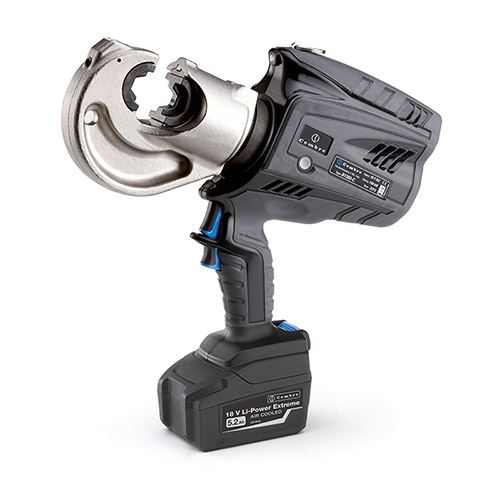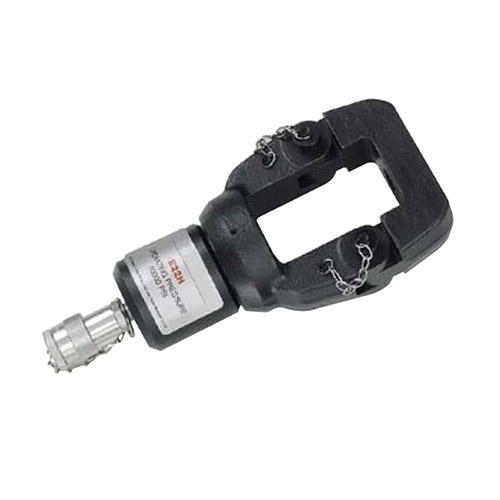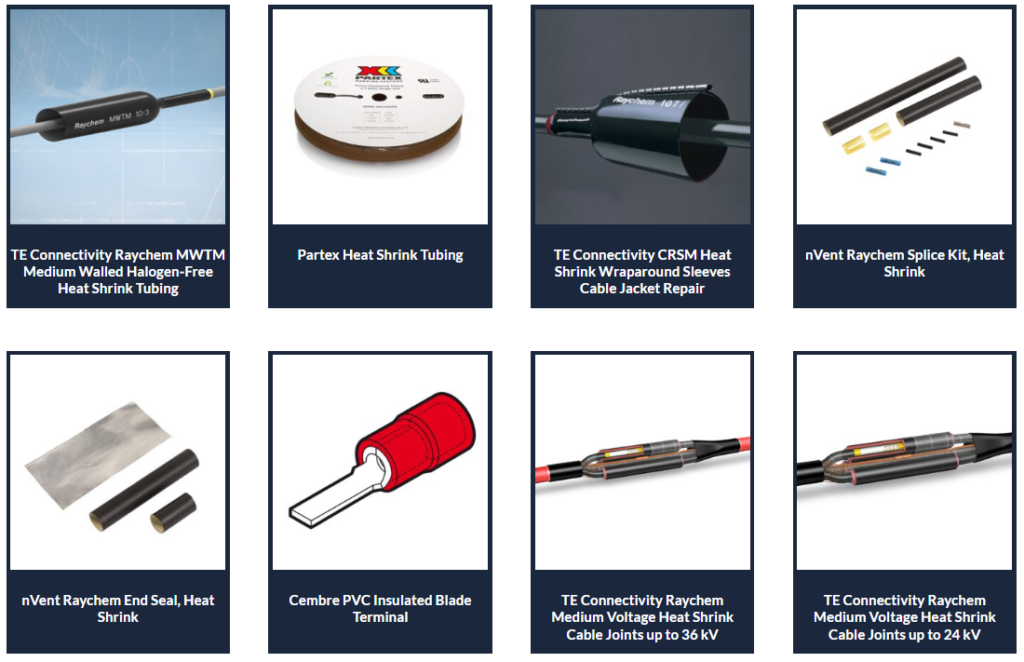
Crimping tools are essential for creating reliable electrical connections, offering advantages over soldering in terms of durability, ease of use, and protection against environmental factors. This guide explores various types of crimping tools, their features, and best practices for achieving secure wire connections.
Crimp Tool Basics
Crimping tools are specialised devices designed to create secure connections between wires and connectors by deforming the connector onto the wire. These versatile instruments are essential in various fields, including electrical work, networking, and automotive applications.
Key Features of Crimping Tools
- Multiple jaw types to accommodate different connector styles and wire sizes
- Ratcheting mechanisms in some models to ensure consistent crimping pressure
- Hydraulic or pneumatic options for heavy-duty industrial applications
- Multi-functional designs that may include wire stripping and cutting capabilities
- Specific tools for different applications, such as coaxial cable, network cable, or electrical wire crimping
When selecting a crimping tool, consider factors like the frequency of use, wire gauge compatibility, and the specific type of connectors you’ll be working with. Proper use of crimping tools results in reliable, gas-tight connections that resist corrosion and provide strong mechanical bonds.
Crimp Tool Types
Crimp tools can be categorised into several types based on their operation and power source:
Handheld Manual
Portable and suitable for smaller crimping tasks. These resemble pliers and are ideal for low-volume work.
Electrical/Battery-Powered
Require less physical effort and are more efficient for frequent use. They often feature interchangeable dies for versatility.
Benchtop
Mounted on workbenches for precision crimping in industrial settings. They provide stability and are suitable for high-volume applications.
Hydraulic
Utilise hydraulic fluid for high-force crimping, making them ideal for heavy-duty industrial and maintenance tasks. They can deliver up to 33 tonnes of crimping force.
Pneumatic
Operate using compressed air, offering quick and efficient crimping for heavy-duty applications. They are popular in automotive and manufacturing industries.
The choice between these types depends on factors such as the frequency of use, required crimping force, and specific application needs. For instance, manual tools are cost-effective for low-volume work, while pneumatic or hydraulic options are better suited for high-volume or industrial crimping tasks.
Specialised Crimping Tool Types
Crimping tools are essential for creating secure connections in various industries and applications. Here’s an overview of specialised crimp tools and their uses:
| Crimp Tool Type | Description and Applications |
| Bootlace Ferrule Crimpers | Designed for crimping bootlace ferrules onto wire ends. Features ratchet mechanisms and ergonomic handles for precise, consistent crimps. Used in electrical work for creating reliable connections in control panels and switchgear. |
| Automotive Crimping Tools | Specifically designed for vehicle wiring systems. Can crimp terminals onto battery cables, spark plug wires, and other automotive electrical components. Essential for automotive repairs and installations. |
| Networking Crimpers | Used for crimping RJ45 connectors onto Ethernet cables. Compatible with various cable types including CAT5e, CAT6, and CAT7. Crucial for network installations and repairs. |
| Hydraulic Crimpers | Heavy-duty tools for large cables and connectors. Used in construction, renewable energy, and industrial applications. Can deliver up to 33 tonnes of crimping force for demanding tasks. |
| Pneumatic Crimpers | Air-powered tools ideal for high-volume, repetitive crimping tasks. Common in manufacturing and assembly lines. Offer consistent crimping force and reduced operator fatigue. |
| PEX Crimping Tools | Specialised for crimping fittings onto PEX pipes. Used in plumbing and HVAC systems for creating leak-free connections. Accessible to both professionals and DIY enthusiasts. |
| Marine Crimping Tools | Designed for use in harsh marine environments. Used for installing navigational equipment, lighting systems, and other marine electrical components. Feature corrosion-resistant materials and waterproof designs. |
When selecting a crimping tool, consider factors such as the specific application, required crimping force, and frequency of use. For instance, ratcheting crimp tools offer a balance between power and portability, making them suitable for a wide range of applications. Always ensure that the chosen tool is compatible with the connectors and wire gauges you’ll be working with to achieve reliable, long-lasting connections.
Choosing the Best Crimping Tool for Your Needs
Selecting the right crimping tool depends on several factors, including usage frequency, wire size, and application requirements. Here’s a breakdown of tool selection criteria:
| Factor | Considerations |
| Wire Gauge | Ensure the tool supports the range of wire sizes you’ll be working with. |
| Crimping Force | Manual tools are suitable for light work, while hydraulic or pneumatic tools are better for high-force applications. |
| Connector Type | Choose a tool that matches the type of terminals (e.g., insulated, non-insulated, ferrules, RJ45). |
| Frequency of Use | Occasional users can opt for handheld tools, while professionals may need ratcheting, benchtop, or battery-powered models. |
| Versatility | Some tools come with interchangeable dies, making them more flexible for different connector styles. |
Selecting the Right Crimp Jaw
Selecting the correct crimp jaw is crucial for achieving secure and reliable electrical connections. Different terminal types require specific jaw profiles to ensure proper crimping.

Key Considerations When Choosing Crimp Jaws
- Match the jaw profile to the terminal type: U or TH profiles for most MLCP systems, M or V profiles for copper press systems
- Consider wire gauge: Crimp tools are sized according to American Wire Gauge (AWG) standards
- Ensure compatibility: Jaw profiles from different manufacturers cannot be mixed
- Check for colour-coding: Some jaws are colour-coded for rapid identification of terminal sizes
- Look for ratcheting mechanisms: These ensure consistent crimping pressure and complete crimps
Adhesive-Lined Heat Shrink Terminals
Adhesive-lined heat shrink terminals offer superior protection and durability for electrical connections, particularly in harsh environments. These terminals combine the benefits of traditional crimp connections with the added security of heat-activated adhesive and shrinkable tubing.
Key Features of Adhesive-Lined Heat Shrink Terminals
- Watertight seal between the cable and terminal, making them ideal for maritime applications
- Enhanced strain relief, reducing the possibility of wire pullout
- Corrosion resistance due to the sealed connection
- Increased flexibility and wear resistance compared to vinyl or nylon insulation
- Translucent insulation for easy visual inspection of the connection

Common Mistakes to Avoid When Crimping
Even with high-quality crimping tools, mistakes in technique can lead to weak or unreliable connections. Here are some common errors and how to avoid them:
Using the Wrong Crimping Tool
Each type of connector requires a specific crimping tool or jaw profile. Using an incorrect tool may result in an insecure connection. Always ensure the tool matches the terminal type and wire gauge.
Over-Crimping or Under-Crimping
- Over-crimping: Applying too much force can damage the wire strands and weaken the connection
- Under-crimping: Too little force may leave the crimp loose, increasing the risk of failure over time
- A ratcheting crimping tool helps apply the correct pressure consistently
Incorrect Wire Stripping
Stripping too much insulation can expose excessive wire, leading to potential shorts. Conversely, stripping too little can prevent proper insertion into the terminal, weakening the crimp. A wire stripper should be used to ensure accurate stripping lengths.
Using the Wrong Terminal Size
Each terminal is designed for a specific wire gauge. Using a terminal that is too large or too small may result in a poor connection or failure under electrical load. Colour-coded terminals and tool guides help ensure compatibility.
Advantages of Crimping Over Soldering
Crimping and soldering are two methods used to secure wire connections, but crimping offers several key benefits:
Reliability and Strength
- A properly crimped connection is gas-tight, preventing oxidation and corrosion over time
- Unlike soldering, crimping does not create a brittle joint that can crack under stress
Speed and Efficiency
- Crimping is significantly faster than soldering, making it ideal for high-volume applications
- No additional materials like solder or flux are required, reducing setup time
Safety and Consistency
- Soldering requires high temperatures, which can damage heat-sensitive components or insulation
- A crimp connection provides consistent results, whereas soldering relies on user technique
For environments where vibration, heat, and moisture are concerns (e.g., automotive, marine, and industrial applications), crimping is generally the preferred method.
Proper Maintenance and Care of Crimping Tools
To ensure the longevity and effectiveness of crimping tools, proper maintenance is essential. Regular cleaning and storage can prevent malfunctions and ensure consistent, high-quality crimps.
Cleaning Your Crimping Tool
- Wipe down the tool with a dry or slightly damp cloth after use to remove dirt and debris
- Use a small brush or compressed air to clean out any particles lodged in the crimping mechanism
- Avoid using harsh chemicals or excessive moisture, as this can cause rust or corrosion
Lubrication and Calibration
- Apply a light machine oil to moving parts to keep them operating smoothly
- Check the tool’s calibration periodically to ensure proper crimp pressure, especially for ratcheting and hydraulic models
- Some tools may require manufacturer-recommended adjustments to maintain performance
Proper Storage
- Store the tool in a dry, cool place away from moisture and dust
- Use protective cases or pouches to prevent damage when not in use
- Avoid dropping or mishandling the tool, as this can lead to misalignment of the crimping jaws
Conclusion
Crimping tools play a crucial role in creating strong, durable electrical connections across various industries. Choosing the right tool, using proper technique, and performing regular maintenance will ensure reliable, long-lasting crimps. Whether you’re working in electrical installations, networking, automotive wiring, or industrial manufacturing, investing in a high-quality crimping tool will enhance efficiency and safety in your projects.
